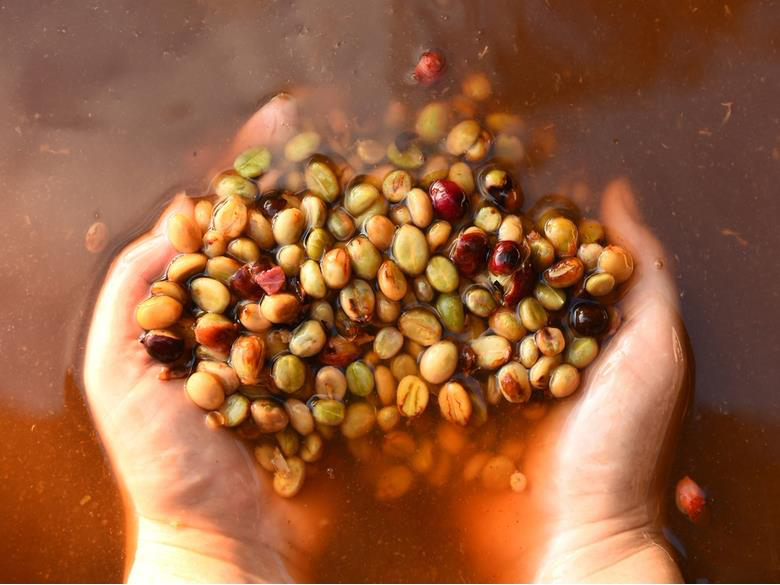Three processing methods of coffee beans there are several ways to treat coffee

Professional coffee knowledge exchange more coffee bean information please follow the coffee workshop (Wechat official account cafe_style)
People usually feel intuitively whether they are bitter, sour and sweet when they drink coffee.
But it's a pity to stay here. Since there are so many coffee shops baking in Taiwan and we have so many choices, why not try and pursue sweet and clean coffee with fruit and flowers?.
The post-processing of coffee after harvest has a dramatic effect on the flavor of a cup of coffee, so knowing how to handle it can help you choose the flavor you like or get rid of the flavor you don't like.
1. Solarization method
Also known as dry treatment, is the oldest raw bean treatment, direct exposure to the coffee fruit, but high-quality sun-dried beans must be constantly stirred to avoid mildew, which requires a higher concentration and labor.
Flavor characteristics: strong fruit flavor (such as blueberries, strawberries, tropical fruits, etc.), thick taste
two。 Washing method
Before the drying process, the pulp of the outer layer of coffee beans is removed by machine, and then fermented with water to remove the sticky pectin. But it gives rise to the environmental protection problem of a large amount of waste water.
Flavor characteristics: high acidity, high complexity, high cleanliness (no negative taste), refreshing taste.
3. Honey treatment
Remove the peel and pulp of coffee and retain part of the pectin layer, while the amount of residual pectin layer determines the color and taste of processed raw beans: White honey, yellow honey, red honey, black honey, but the amount of pectin retention is not an absolute factor. it has something to do with dryness.
Flavor characteristics: high sweetness, thick and full taste.
Important Notice :
前街咖啡 FrontStreet Coffee has moved to new addredd:
FrontStreet Coffee Address: 315,Donghua East Road,GuangZhou
Tel:020 38364473
- Prev

A good "fermentation" process is a great blessing for commercial coffee beans!
Professional coffee knowledge exchange more coffee bean information please follow the coffee workshop (Wechat official account cafe_style) for coffee people, yeast and bacteria convert sugar into energy and flavor compounds, fermentation will occur in the three major treatments of coffee and affect the flavor, bad fermentation leads to coffee mildew, but if it is well used, fermentation can bring deep popularity to consumers
- Next

How to make coffee? how to make coffee?
Professional coffee knowledge exchange more coffee bean information Please pay attention to the coffee workshop (Wechat official account cafe_style) the pressure pot is a full-immersed brewing apparatus with a metal strainer. This makes the brewed coffee have a characteristic, because the water and coffee powder are directly soaked, so the resulting coffee will be more rich in oil, so it will have a thicker and fuller taste. For that.
Related
- What is the meaning of lactic acid fermentation with coffee bean treatment?
- How to judge the state of foam by sound?
- How does the latte pull out the unicorn pattern? Come to get for a little trick to improve the flower pull!
- Will flower pulling affect the taste of the latte?
- Do you know the history of coffee?
- The difference between honey treatment and sun washing what is raisin honey treatment?
- What kind of milk can a novice use to make coffee foam to keep the foam longer? The correct method and skills of milking tutorial sharing
- Why do washed coffee beans taste sour? Flavor characteristics of washed Coffee
- Introduction to the skill of how to practice the size and height of water injection around the circle of hand-brewed coffee
- How do beginners practice coffee flower drawing from scratch?

